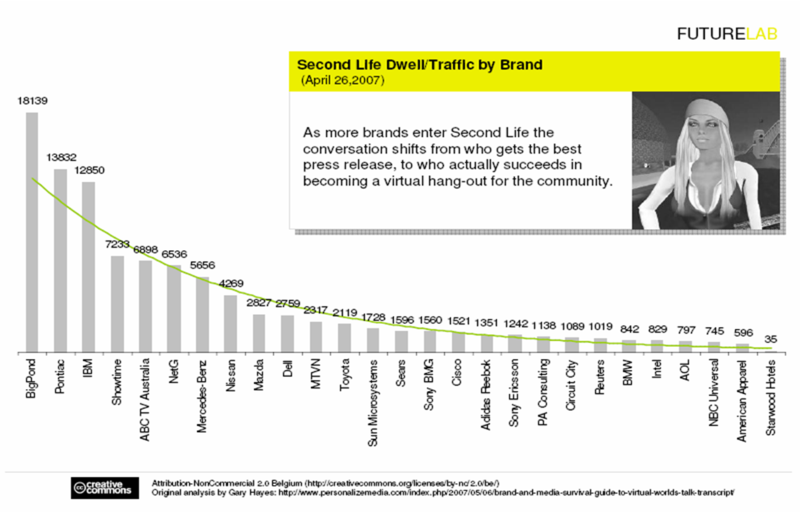Community = Brand Success on Second Life?
Greg Verdino has posted an intriguing analysis of FutureLab data on “dwell time” on brand property in Second Life in which he looks at the success of Pontiac and IBM compared to their in-world ‘competitors':
Both put community first, and both have seemingly reaped the benefits in terms of depth of in-world engagement.Rather than simply build out a virtual auto dealership, Pontiac chose to partner with the SL resident community and offer up free land to anyone interested in building out “car culture” in the virtual world. Their efforts have earned them nearly three times the dwell of their nearest competitor, Mercedes-Benz, who has essentially built a vehicle showroom.
IBM has used SL primarily to enable interaction among their own corporate community members (employees, customers, business partners) regardless of geographic and organizational boundaries. They’ve also been testing their ability to engage in-world builders and scripters through their more recently launched IBM Codestation, which serves as a forum where users can access shared resident-created chunks of code. Their dwell measure eclipses that of technology competitors Dell, Sun, Cisco and Intel (I actually couldn’t find Intel in-world) — all of whom seem more focused on using SL as a platform to promote products and services.
The take-away seems pretty clear. If you’re serious about success in the virtual world, you should be thinking about how you can build relationships with — and earn the loyalty of — the community you hope to engage. Focus on the value you can provide in order to entice residents to voluntarily spend time with your brand.
Here is the accompanying FutureLab bar chart:
Of course, the idea that the way to achieve success is to build relationships and foster community gets no debate from me.
Do any readers with more Second Life experience than I have any takes on this?

